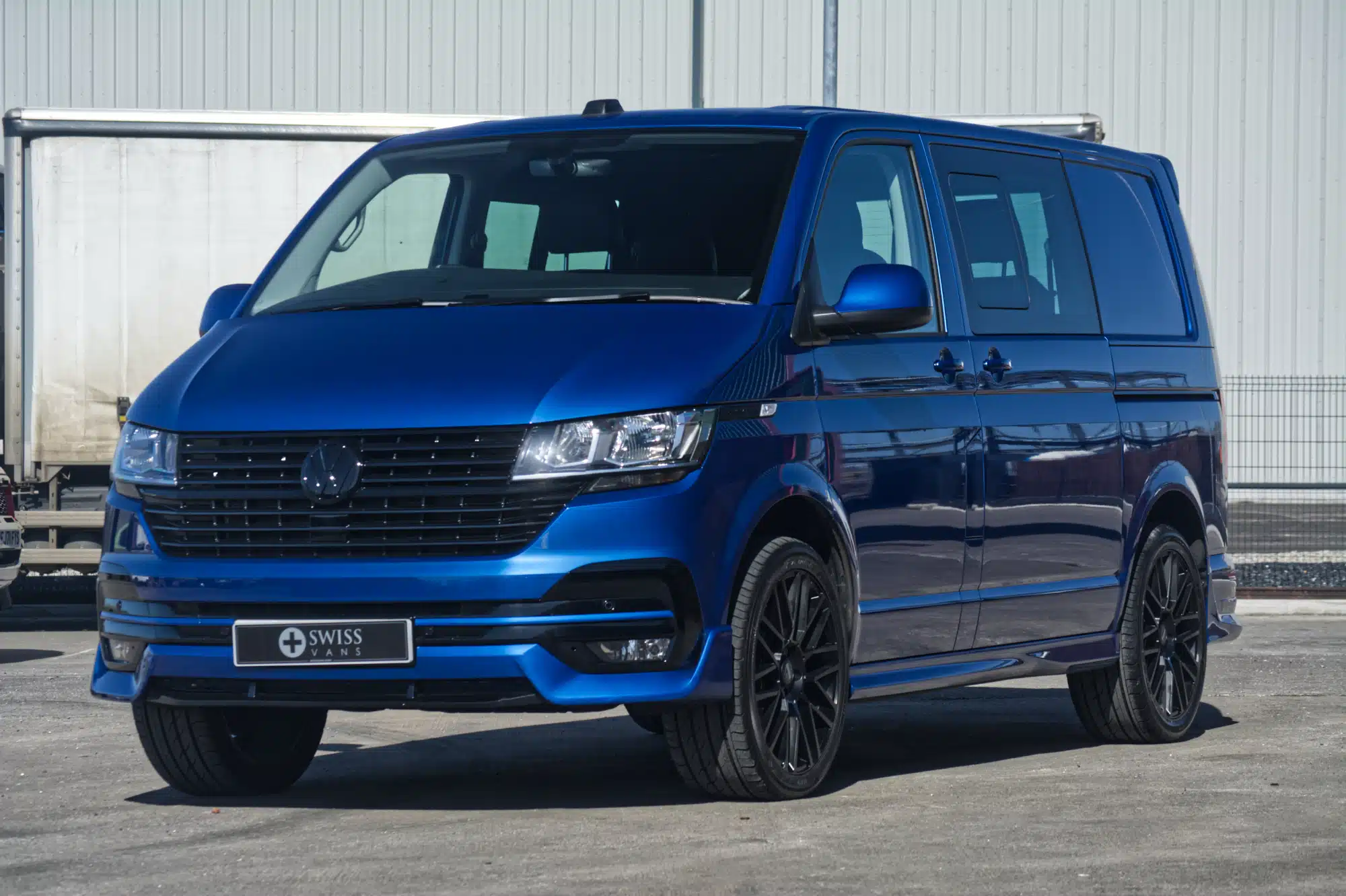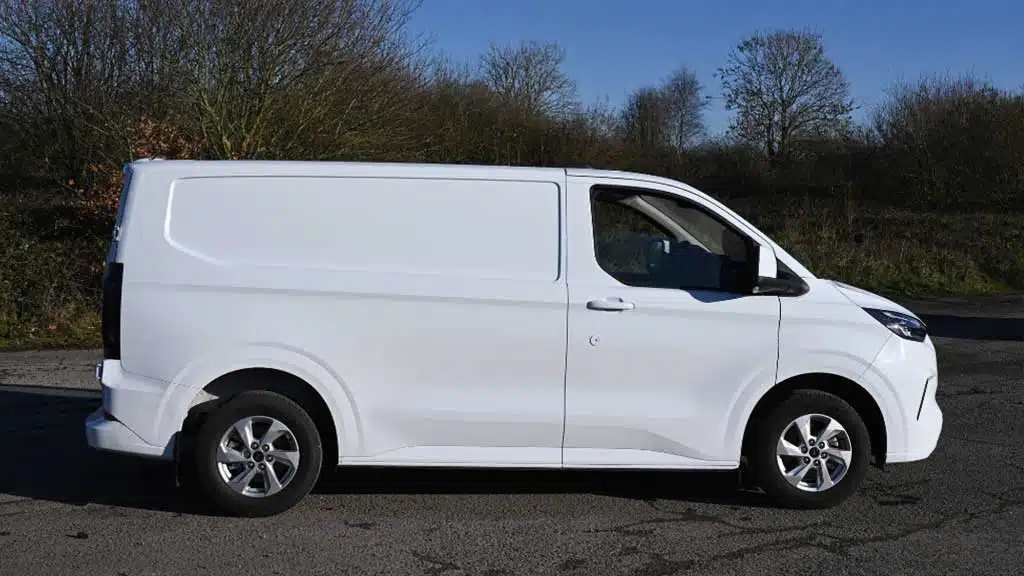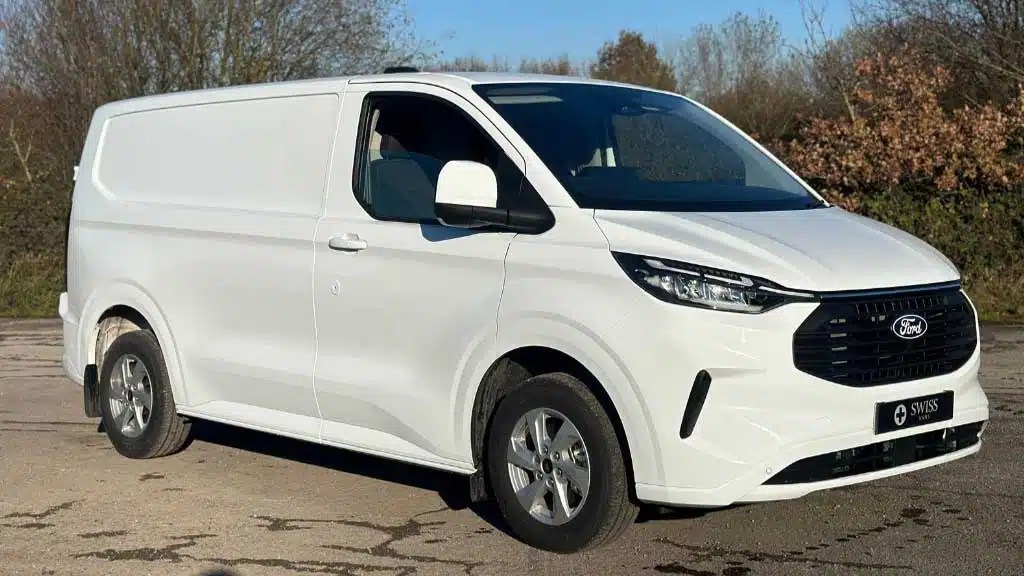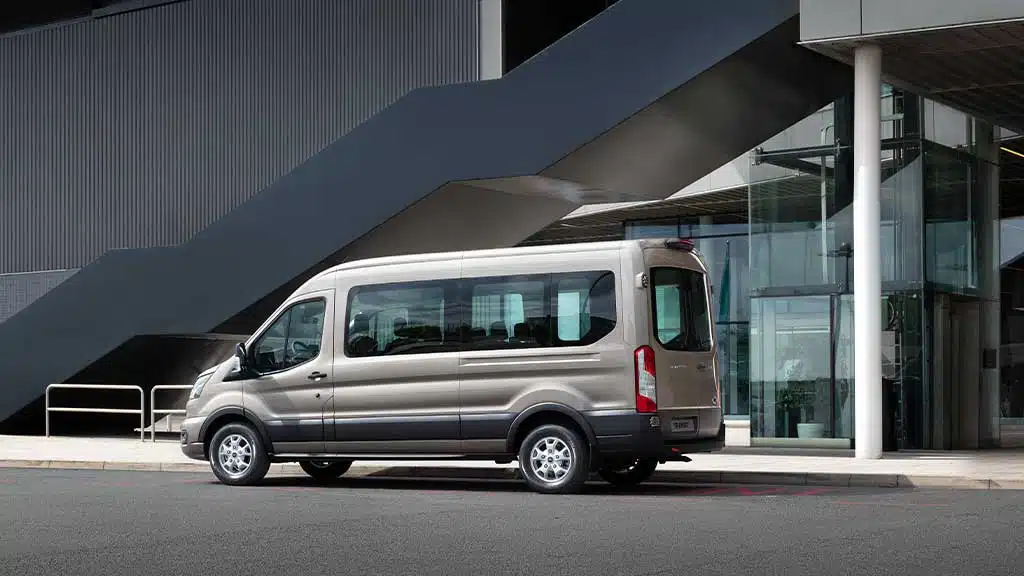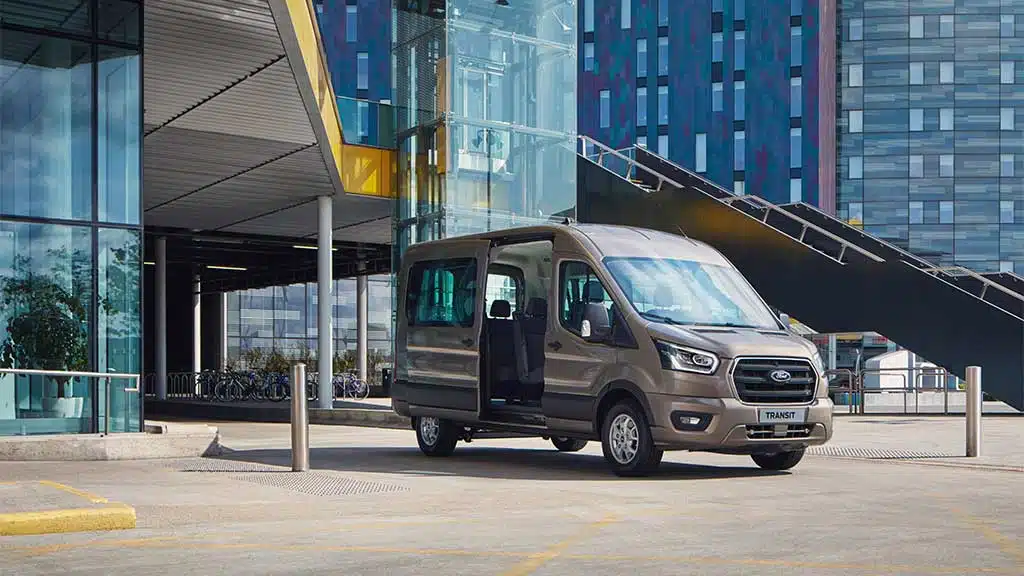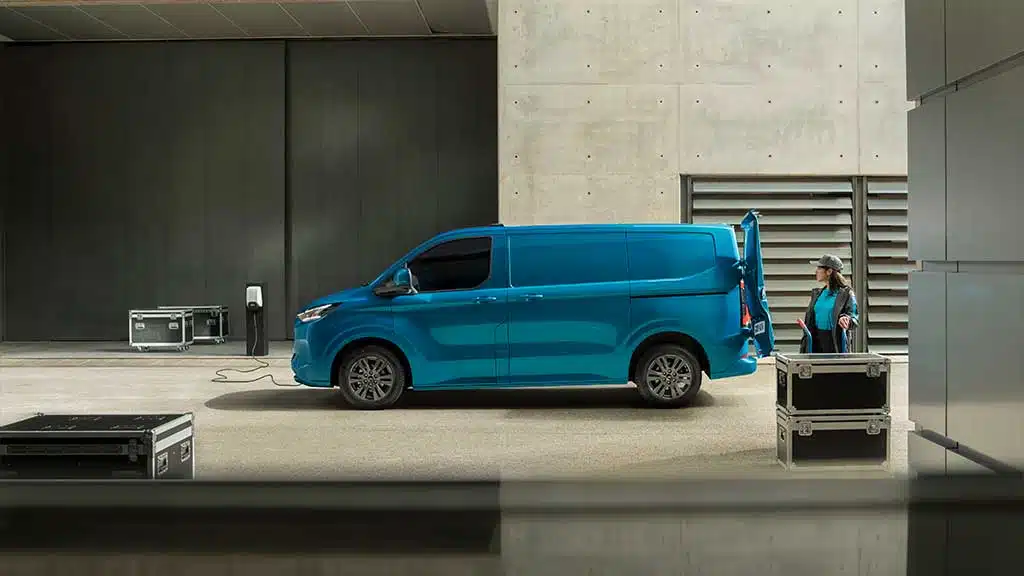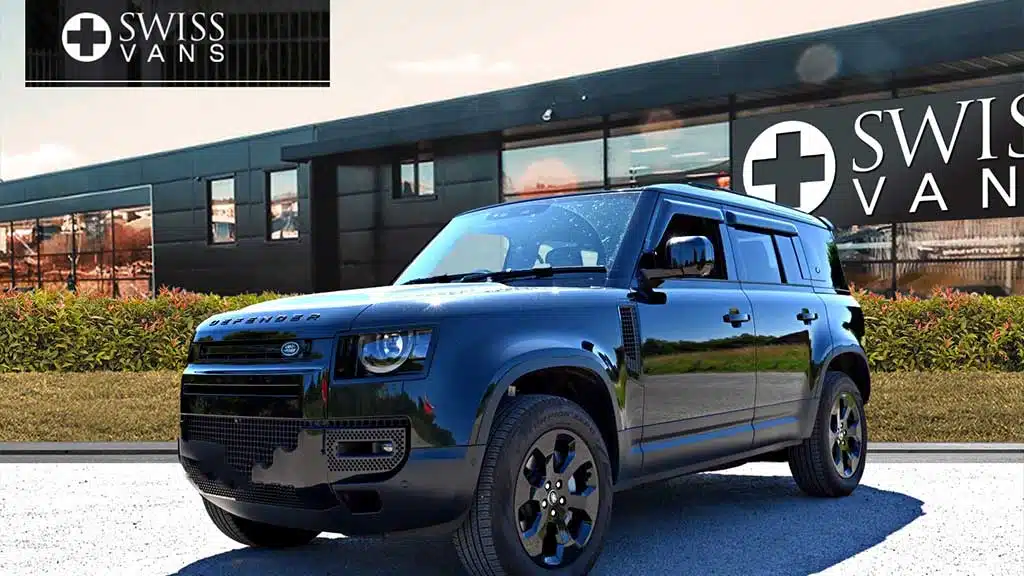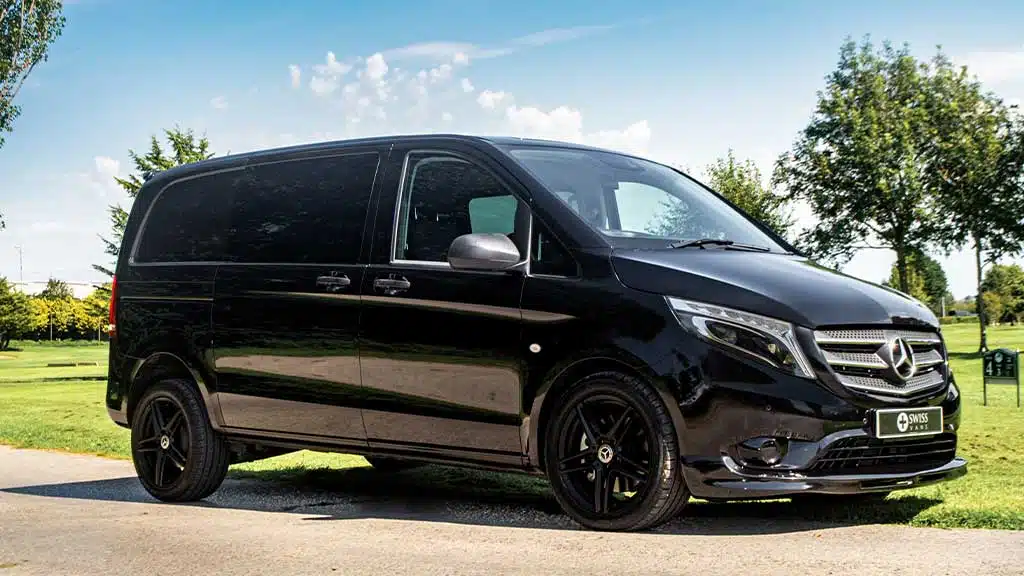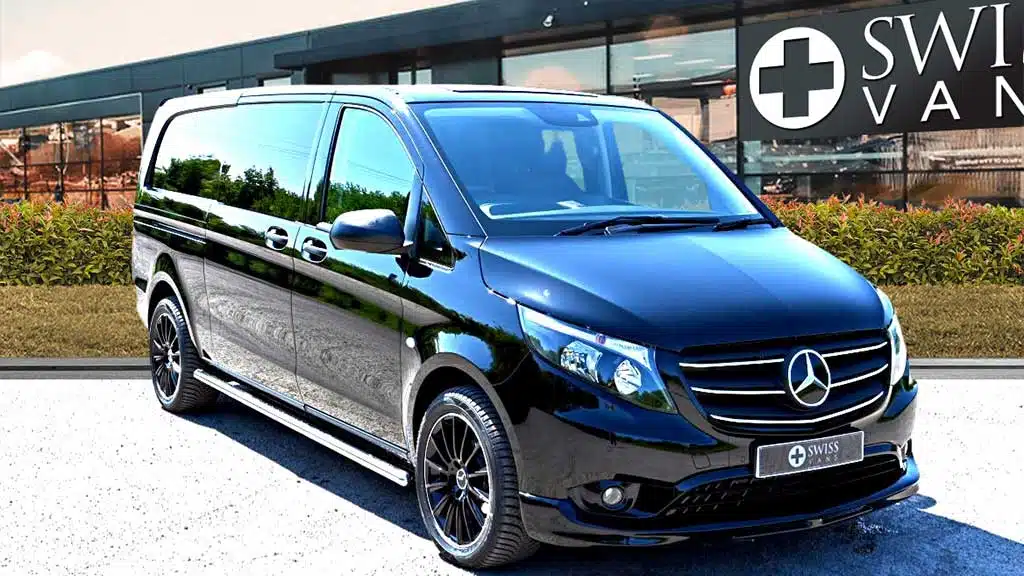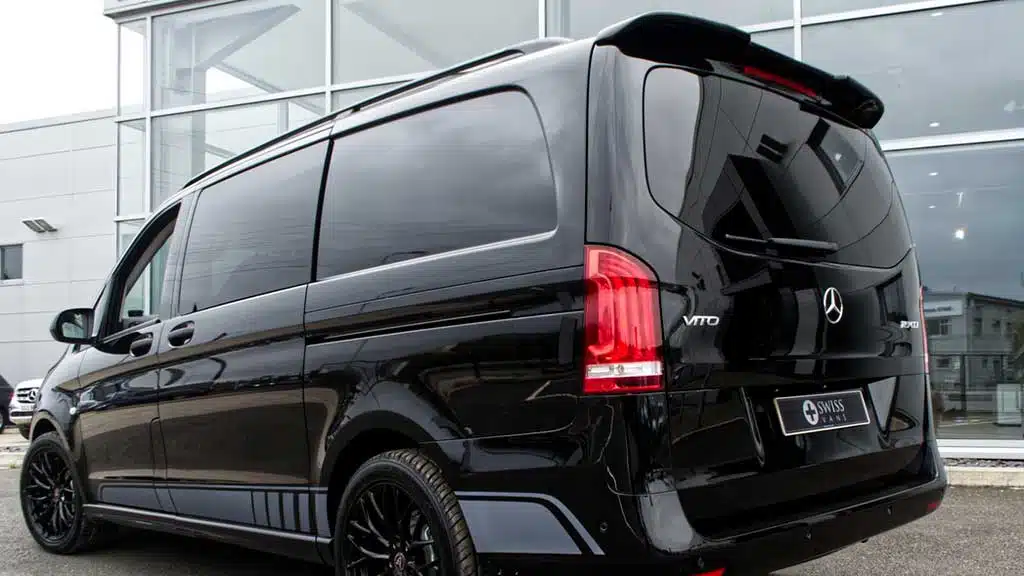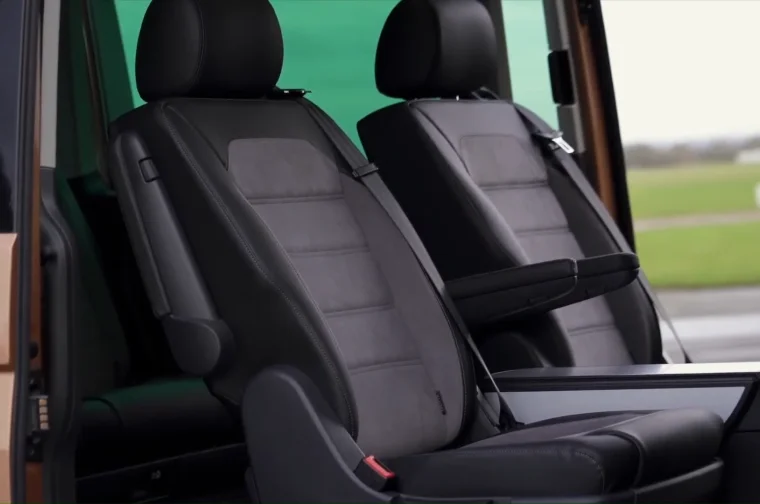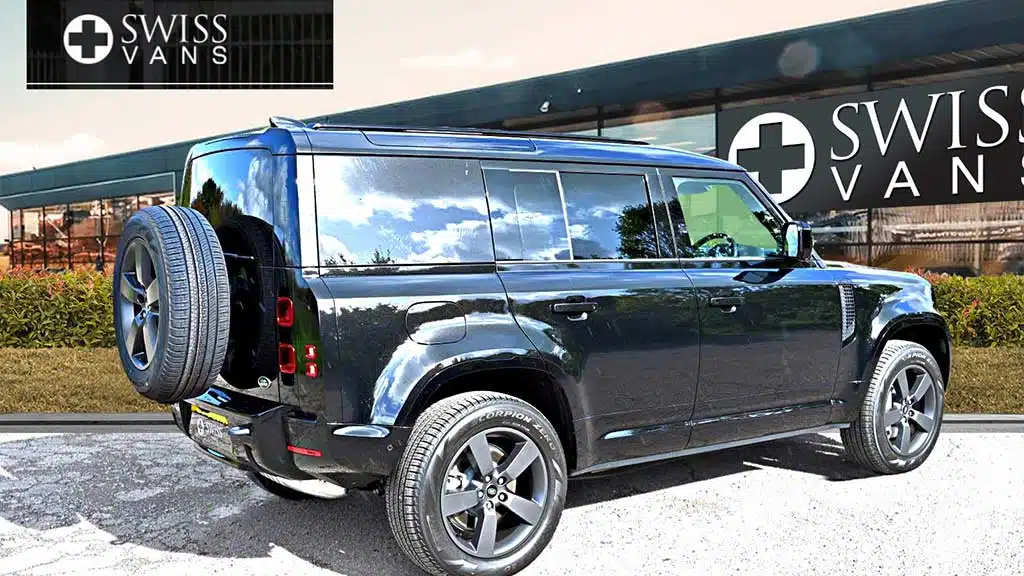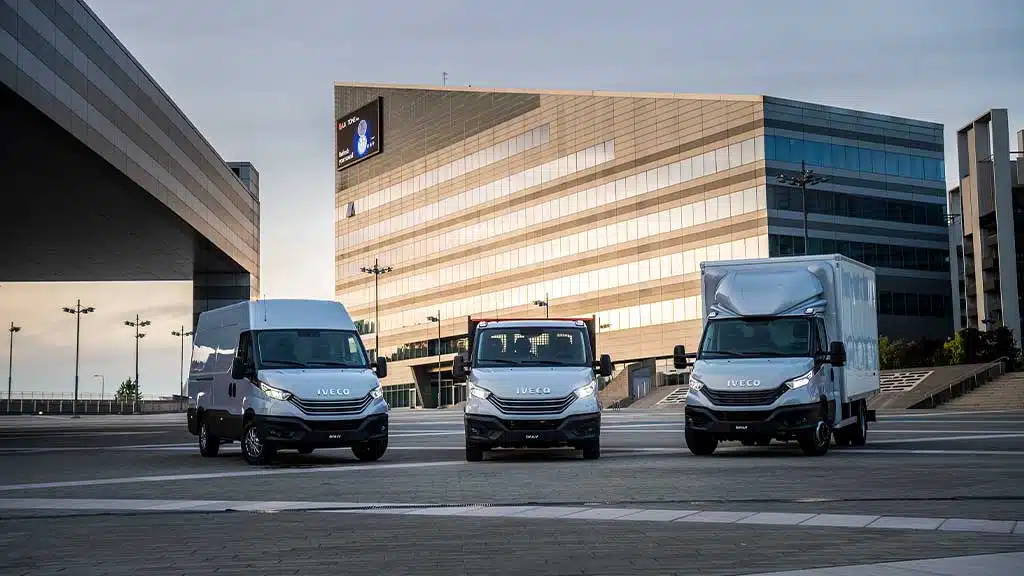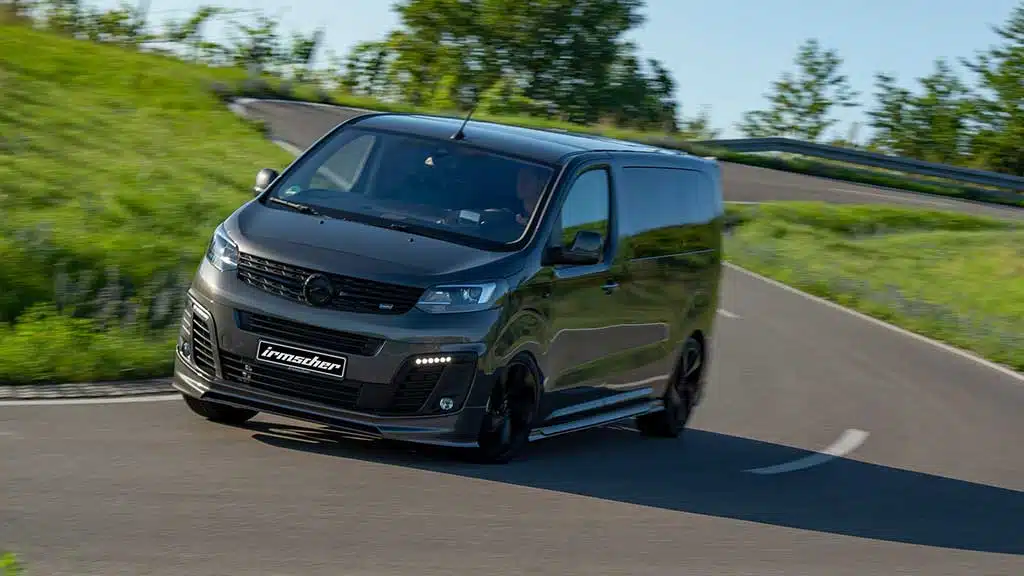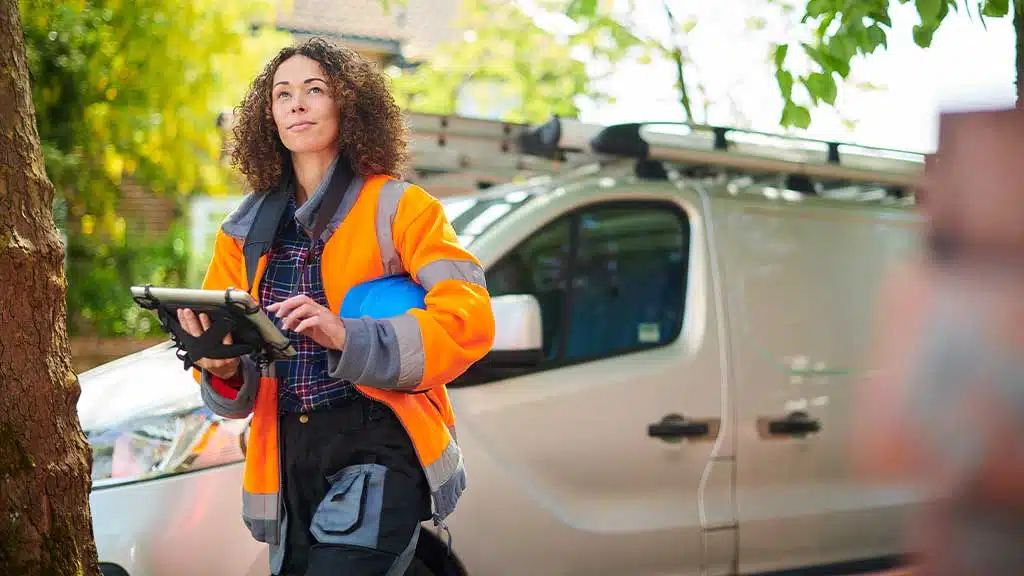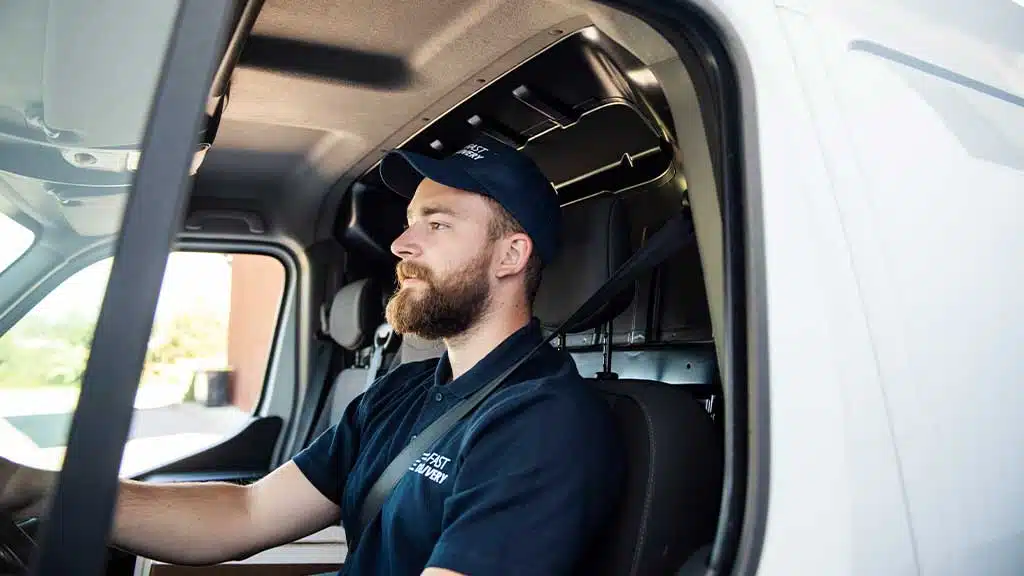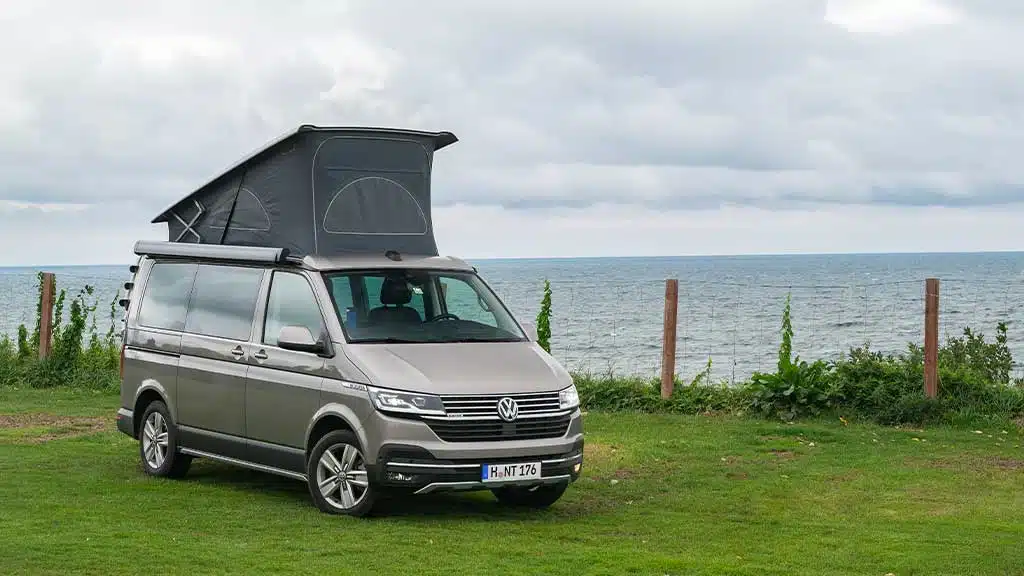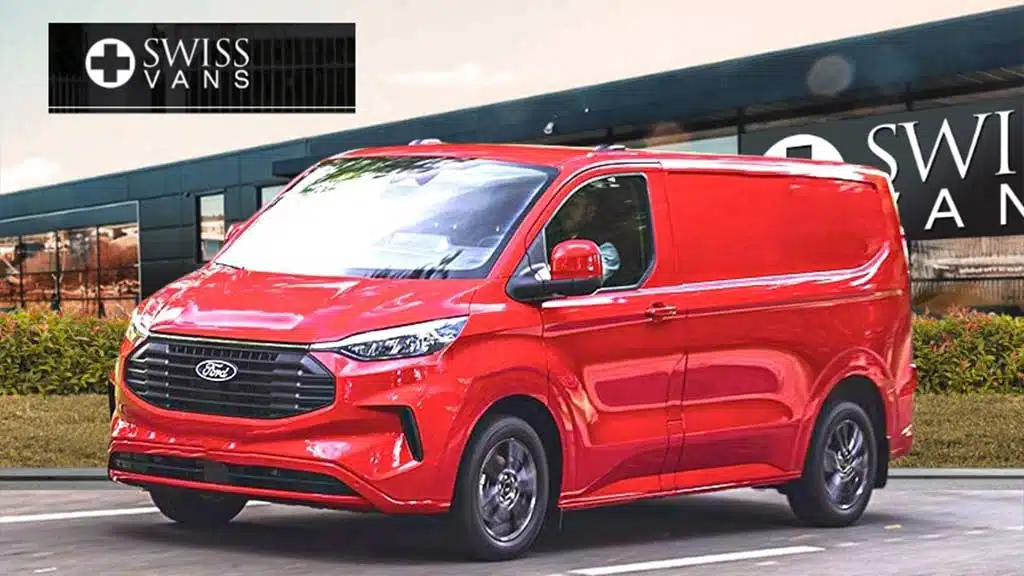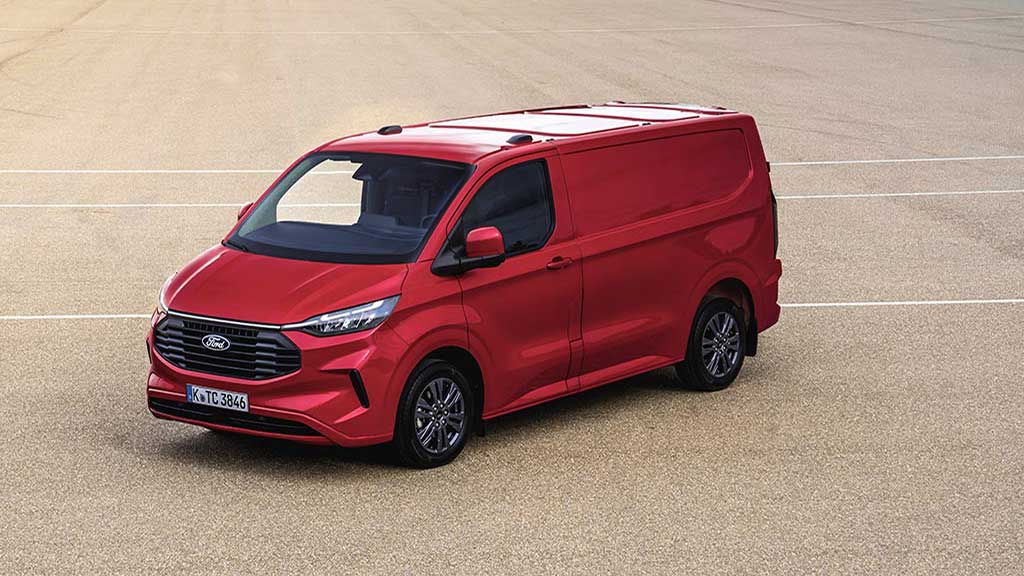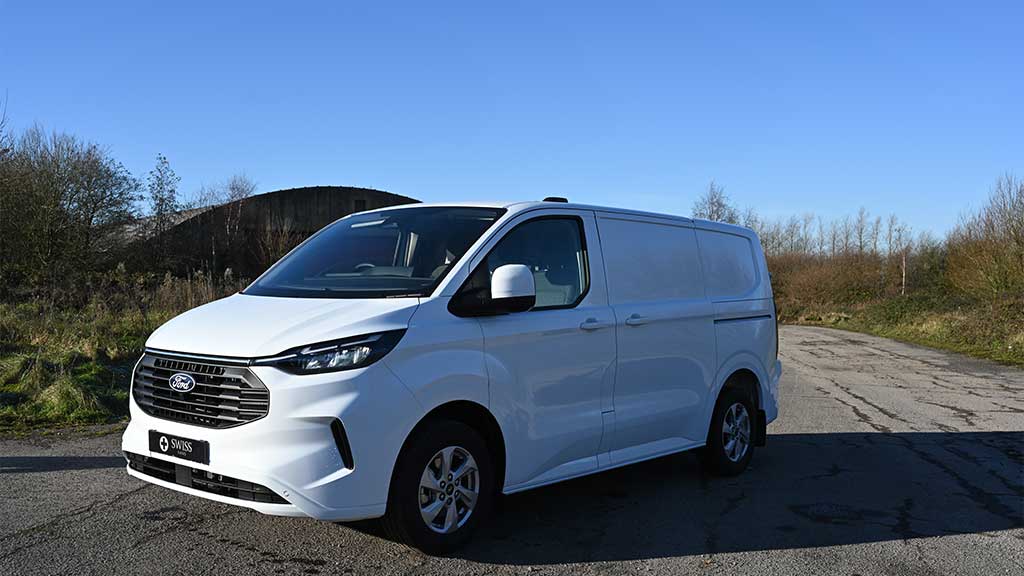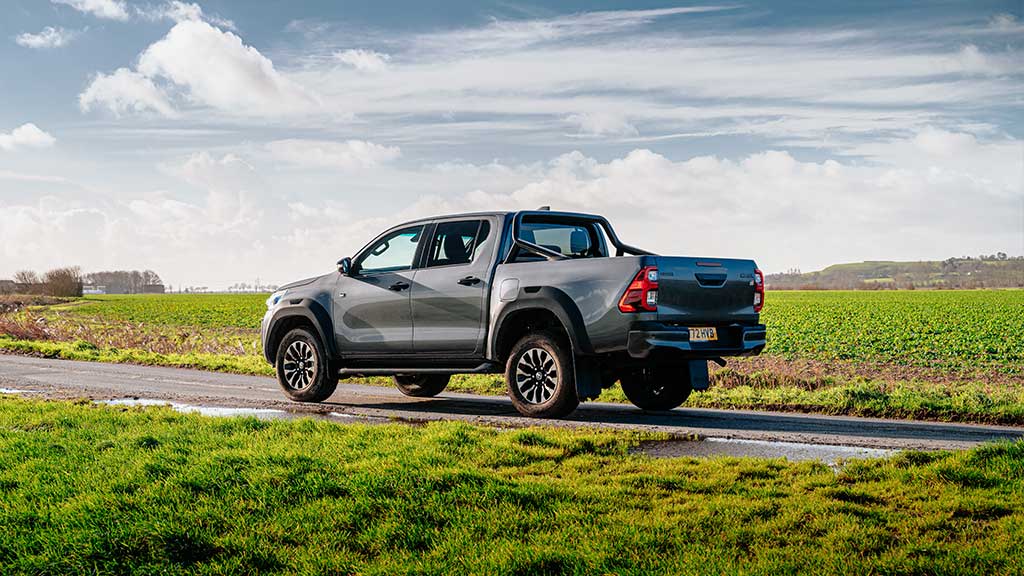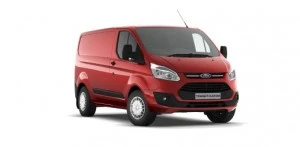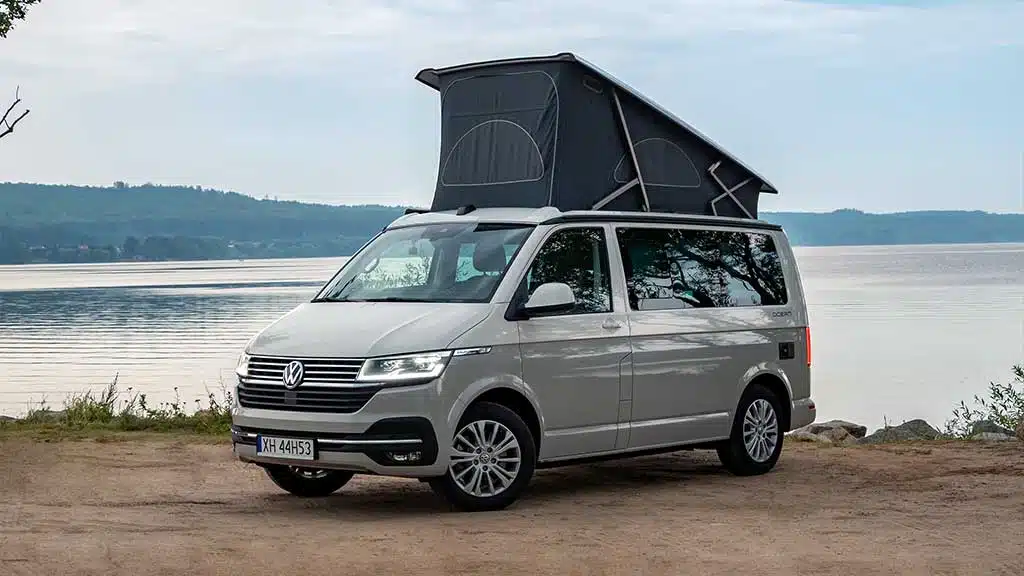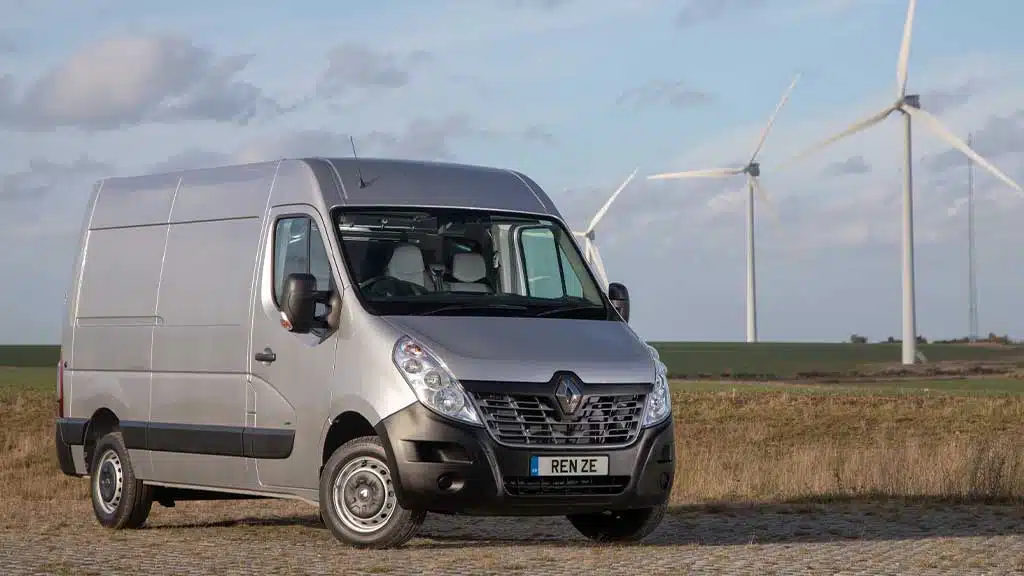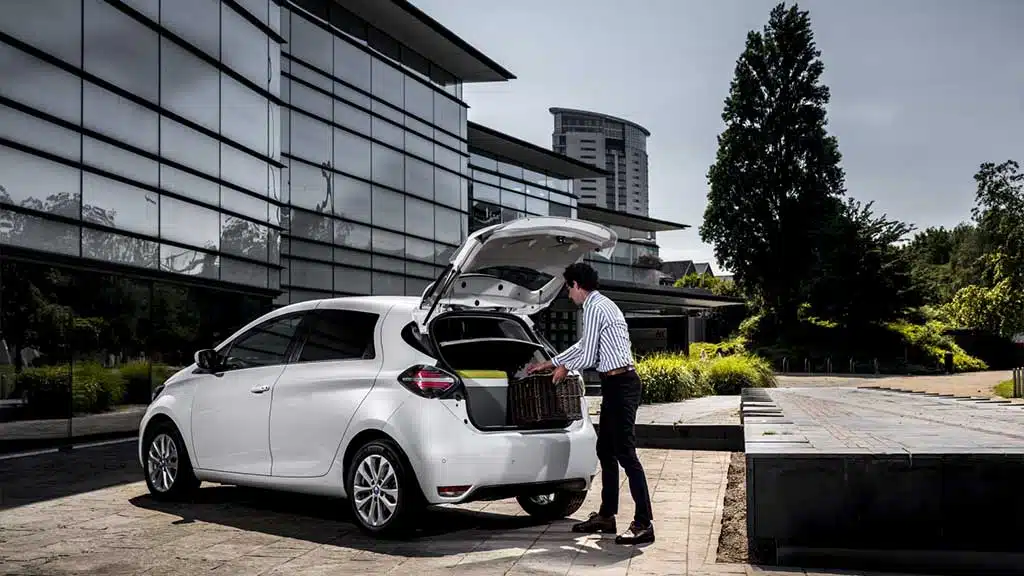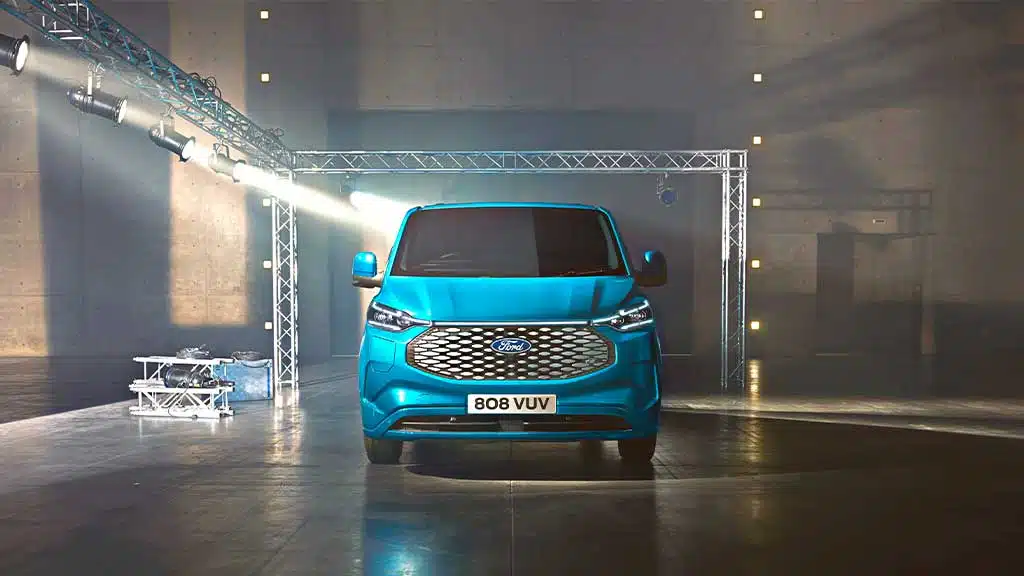What have been your thoughts when you think about the VW and Ford vans? Of course, you will stand in the middle of the road when contemplating which options to consider. Let’s get right to it; we’ve got a twin-test evaluation of two of the most well-liked and thrilling mid-size sport vans available today: the Ford Transit Van and the Volkswagen Van.
These sporty medium vans are built to appeal to both business and lifestyle buyers, with beefed-up construction on the exterior that makes your company stand out from the crowd and posher cabs that keep people more comfortable than typical inside. Additionally, they have updated suspension, which is meant to improve their handling and make them appear even more sharp.
The Ford and Volkswagen vans are two of the most well-liked automobiles in several car markets. Both manufacturers are known for their dependability, and both cars come in a variety of height, length, and engine configurations that make them suitable for various professions.
Which, though, is the best? Are both vans worth comparing against each other? What distinguishes the VW van from the Ford Van? Let’s find out more as we look at several features.
Brief on VW Vans and Ford Vans
The VW van is a cutting-edge, versatile van that can be totally customized to your company’s demands. Interestingly, the Transporter VW van can easily traverse uneven terrain thanks to its flexibility, which is demonstrated by having the option of two dimensions, three heights, four engines, and different transmissions.
The Ford van, on the other hand, presents your company in a professional light. A Ford Transit Custom can meet every business’s needs. It comes in two lengths, two heights, four diverse trim options, and three different engines.
VW Vans vs. Ford Vans
With both vans offering distinct features and capabilities, the best way to choose the right option for your business is to look at these features. In this aspect, we will explore their performance, safety, interiors, exteriors, and running operation costs. However, they do have similarities, which many van buyers neglect when shopping for a new van.
Performance

The Volkswagen Transporter offers four engine choices compared to the three Ford Transit vans offer. The Ford engines are adaptable; the base model, with 104 horsepower, is an excellent choice for cities. With 128 horsepower, the mind-range choice is excellent for highway driving, while the top model’s 168 bhp will let you accelerate swiftly.
The light steering and slick six-speed transmission enable simple manoeuvrability. The negative? While it is not a deal-breaker, there may be more engine sounds than you prefer. Regarding transmission, the VW Transporter outperforms the competition; the top models come equipped with a seven-speed gearbox that makes driving on highways and in cities a breeze. The base model has 102 horsepower, the mid-range option has an amazing 150 horsepower, and the top-of-the-line variant has 204 horsepower and accelerates the van from 0 to 62 mph in 8.6 seconds.
All-wheel-drive versions of the VW Transporter are also available, but front-wheel-drive models are more responsive and agile. This provides more traction if you’re likely to be driving in slick conditions. Due to this, the Volkswagen Transporter overtakes the competition, especially for customers seeking additional power and added protection in slippery or rainy weather.
Torque
Staying with engines, having powerful ones is useless if running them will cost you a fortune! The Volkswagen Transporter’s 102ps output has the best fuel economy at 47.9mpg between the two vans. The Ford van’s best mpg rating is 46.3. In terms of Torque, it’s clear that the VW van outperforms the Ford Van.
Interior Features
The Ford is wonderful since it features a lot of storage space, including a secured glove box and different trays, shelves, and bins. It implies that you can maintain the cabin neat while travelling and know where things are when you arrive home.
The standard specification includes two 12V charging ports, motorized windows, and a headlight delay. The Trend, the next vehicle, adds heated windows, cruise control, and automated headlights, while the top two features are cooling and DAB radio.
The Ford van has superior storage, which the Volkswagen could not match. When driving, papers may reflect in the windscreen because your belongings won’t be kept nearly as firmly, and slots that could be covered aren’t.
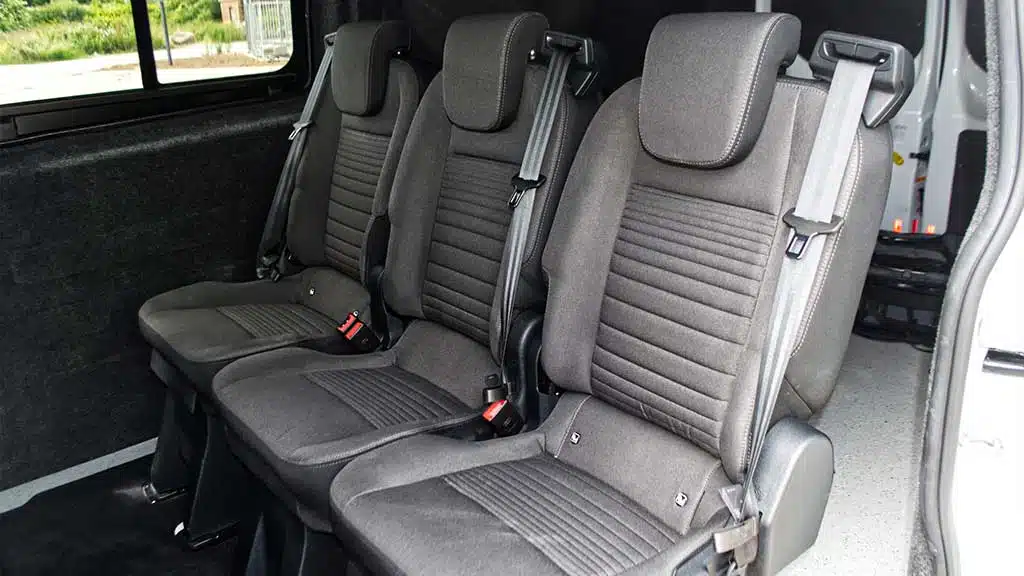
However, all three trim levels come standard with USB and Bluetooth capability and DAB radio. The Trendline, the mid-level choice, doesn’t really add much more noteworthy than cruise control. Still, the Highline, the top-of-the-line model, adds an auto-dimming rearview mirror, air conditioning, automated lighting, and a heated windscreen.
Overall, it was a very narrow escape. The Ford’s mid-spec model gives more for your money, but the VW’s base model provides more. There isn’t much in it for the higher specifications.
Exteriors
Nothing has changed regarding the Ford van’s stylistic compatibility with Ford’s automobile lines. Ford’s LCV lineup changed along with the company’s switch to open grilles. The Custom has a medium van-like appearance and some flair but is mostly all business.
The trim levels have a minor impact on the exterior; as you move up, body-coloured panels replace the black plastic ones, alloy wheels are added, fog lights are added, grille trim is replaced with chrome, and door mirrors become fully electric (heating and moving). To make signwriting a little bit simpler, the sides of the Custom are likewise liberally free of panel lines.
The VW van is a cultural landmark, not just for its aesthetic appeal but also for its long history and varied applications. Even in the panel van versions, the appearance of the Transporters still borrows certain design cues from the original camper vans.
Because the grilles on the VW LCV offering are a replica of those on the vehicle, the lines and curves on the Transporter’s front end smoothly integrate to give it an edge over SUVs. Like the Ford van, trim levels add more chrome trim and body-coloured panels to the vehicle, significantly changing its exterior appearance. Choose the option that best fits your budget and your sense of style.
Safety Features
Let’s explore the security aspect of both vans. The first van to receive a five-star safety certification from Euro NCAP was the Ford Transit Custom, which was a noteworthy accomplishment. The most recent line has the newest technology, including electronic stability programs (ESP) versions that help the craft maintain stability in the wind and adjust for cargo. Additionally, pre-collision aid is an option, as is stability control and emergency braking assistance.
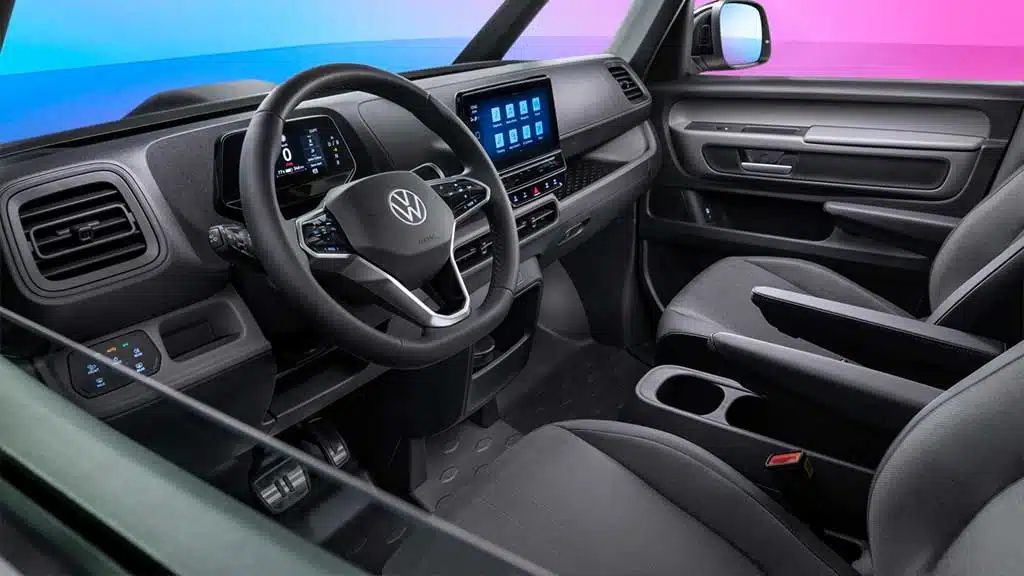
The Volkswagen Transporter van provides many features to keep drivers secure in any situation. Along with the standard driver and passenger airbags, the vehicle has ESP and ABS braking technologies. Front fog lights with cornering lights built in are an option. The cars are once again neck and neck, with the Transit Custom’s ESP’s sophistication putting it in front of the Transporter in terms of safety.
Running Operation Cost
A three-year warranty is provided for each van. Although Ford has been having issues with early oil replacement requests with this engine, the Transit Custom’s servicing intervals are significantly longer at 36,000 miles or two years. Both vehicles offer information on when a service is necessary via the trip computer.
The VW has the advantage regarding fuel economy; in this configuration, the 204hp engine and seven-speed DSG transmission are stated to provide a claimed 42.8 mpg, which is better than the equivalent of the manual gearbox. Less efficient than the manual transmission Ford with 170 horsepower only achieves 39.8 mpg, and since it employs outdated technology, its real-world performance is to be even lower.
The VW will also likely retain its value better, allowing you to return more of your investment if you decide to trade it in.
Fuel economy and emissions
The Ford van competes with any vehicle in its class regarding fuel efficiency. It has EcoBlue technology in its entry-level and mid-range variants, providing 46 mpg and 157 g/km of CO2. The model in the range with the highest emissions produces 165g/km of CO2. All variants comply with Euro6 emissions requirements thanks to common-rail injector turbocharging technology.
Due to its BlueMotion Technology kit and compliance with Euro6 emissions requirements, the Volkswagen Transporter. The 102bhp variant can go up to 47.9 mpg and produces only 153g/km of CO2, narrowly beating out the base Transit. However, the more powerful Transporter is less eco-friendly than the Ford, emitting 174g/km of CO2.
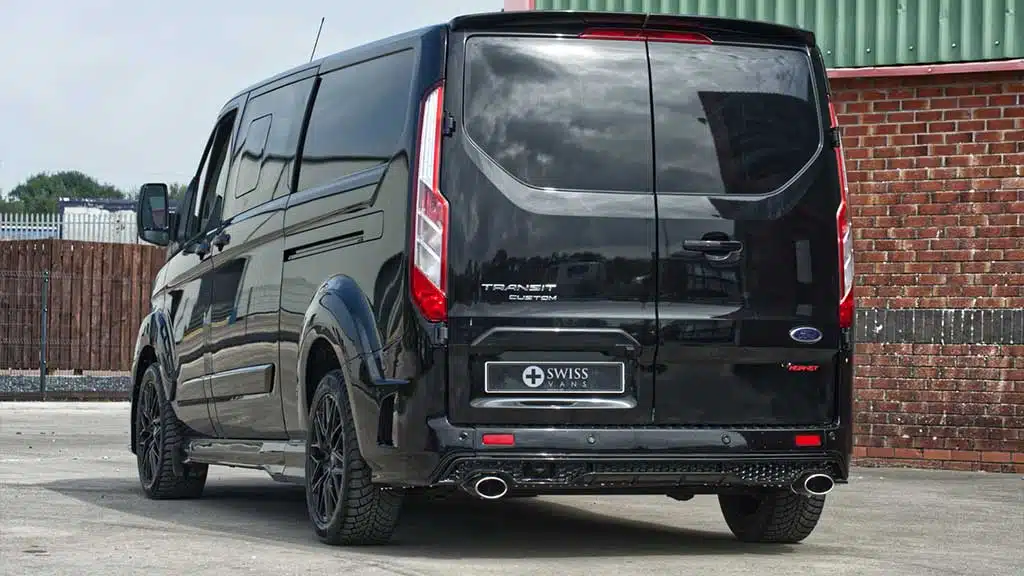
VW Vans vs. Ford Vans – Overall Verdict
If money isn’t an issue, the VW van would be our clear choice because it is faster, nicer to drive, has a more thoughtfully built cab, and even promises to be less expensive to maintain. Additionally, the grade of the materials used upfront is higher, and more safety equipment is included as standard.
Nevertheless, it could be more flawless. Comparatively speaking, Ford’s back seat space appears unfinished, and since there isn’t even an option for a rear bulkhead, it will only be acceptable for some. VW really needs to take action to reduce traffic noise.


